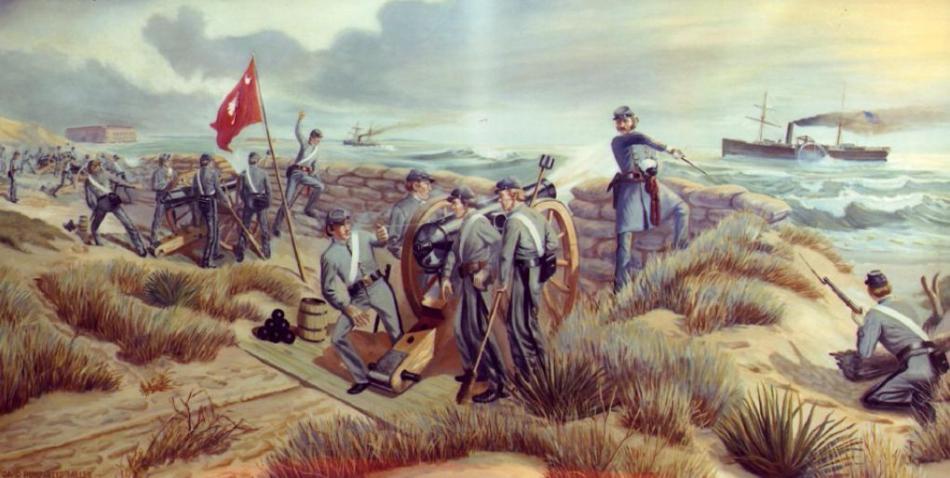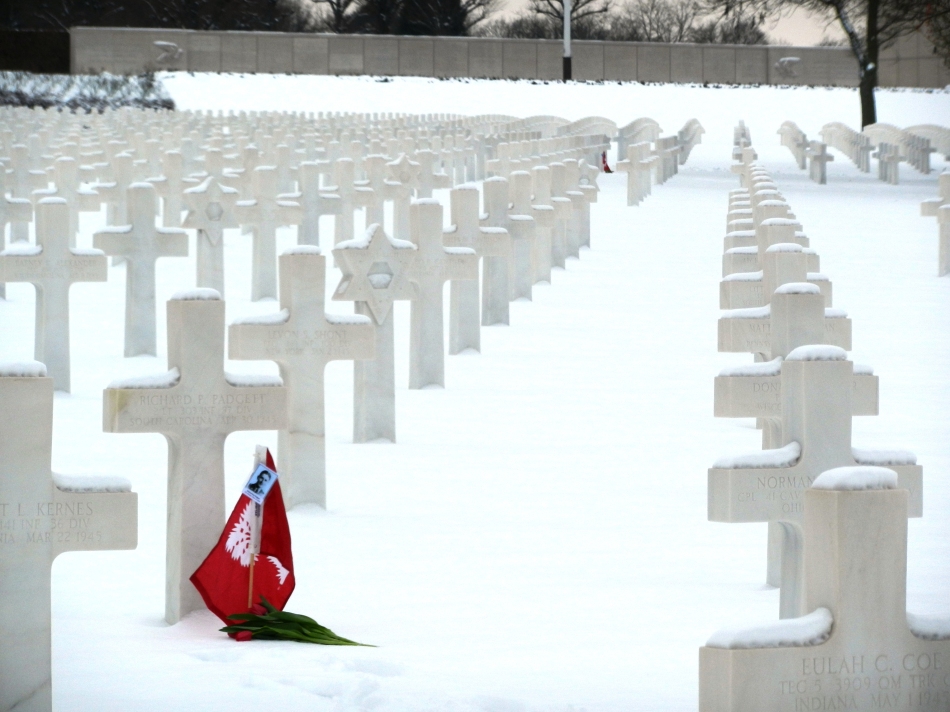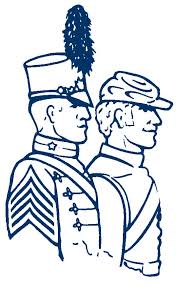The Big, Red Flag
You may be scratching your head wondering about the red flag seen in several photographs on this site. You may have noticed the similarity to the South Carolina state flag. A palmetto tree, a crescent moon, but the field is bright, blood, RED. The red sets it apart. It is the South Carolina Corps of Cadets’ spirit flag, affectionately known as “Big Red”.
From my own cadet experience, I remember well the mural in Daniel Library which depicts the cadet artillery battery on Morris Island firing on the federal ship Star of the West as it was trying to resupply the federal garrison at Fort Sumter in Charleston Harbor on January 9, 1861.

Star of the West Mural in Daniel Library on the Citadel campus, Charleston, S.C.
The flag believed to have flown over the battery at Morris Island January 1861 is now on display within the Citadel Alumni Association’s building next to the campus. It was “discovered” by Citadel alumni in a museum of the State Historical Society of Iowa in early 2007. Through the tremendous efforts of many alumni, Big Red was brought “home”. The flag measures 8 feet by 10 feet. Mr. Ed Carter, ’66, Chairman of the Big Red Foundation and a former CAA President, told me during a call last December, “You have to see it in person. It’s size is awesome! It’s an amazing piece of Citadel history!”
[Citadel Alumni Association’s Big Red site – more information and live webcam to view Big Red]
Andy Kullberg, Class of 1983, and member of the Citadel Historical Council, wrote in Big Red: Timeless Symbol of Duty, Honor, and Courage
During the administration of Gen Mark Clark, President of The Citadel, studies were conducted in preparation for the 100th anniversary of the Star of the West incident in 1961. Historians completed in-depth research that led to the creation of the Star of the West Mural in the Daniel Library which clearly depicts cadets firing at the Star of the West with the “red palmetto flag” flying over the battery. The flag became increasingly popular with cadets during the nationally televised Centennial Reenactment of the Star of the West on Jan 9, 1961. It was adopted by the Touchdown Cannon Crew that fired the cannon during football games. By the late 1980s the flag became affectionately known as “Big Red” and was adopted as the official “spirit” flag of the Corps of Cadets. Lt Gen “Bud” Watts, class of 1958, President of The Citadel and the Board of Visitors recognized and approved “Big Red” as the official spirit flag of the Corps on Friday, Oct 18, 1992. Big Red, now an official flag of the Corps, symbolizes the qualities of duty, honor, and courage, and proudly flies over the parade ground and is seen at all major sporting events.
[Brief History of The Citadel by The Citadel Alumni Association History Committee]
Carried by cadets and alumni, Big Red has made its way overseas to wherever the U.S. military has been deployed and to countless well-known places including Normandy American Cemetery at Colleville-sur-Mer, France. Several years ago, a photo of George Rodgers, Class of 1966, holding a small Big Red at the grave of Major Thomas Dry Howie, Class of 1929, was published on the Citadel Alumni Association webpage dedicated to “Rings Around the World”. That photo motivated me in my research for The Citadel Memorial Europe.

From the grave of Paul Padgett, Class of 1944, up and to the right, another Big Red is visible at the grave of Peter Cureton, Class of 1940. Both men rest in peace at Plot E, Lorraine American Cemetery, St. Avold, France. This photo was taken February 12, 2013.
For almost a year, The Citadel Memorial Europe is a source of information about all the Citadel Men at the WWI and WWII military cemeteries of Europe and North Africa, and there is steadily increasing interest from family members, the Citadel community, and local Europeans to learn about and remember these men. As a symbol of where they came from, the bonds they formed there, and the values they honed there, it is my simple dream that in a few years time, Big Red will have been placed at the grave and by the name of every Citadel Man interred and memorialized at an overseas military cemetery.
/RL


And it flies on the front porch of the DeMarco quarters @ Maxwell AFB
Roger,
great job on utilizing and explaining the meaning of Big Red Roger!
Tex Curtis ’64
Tex, thank you for all the support you have given me and the memorial. It means a lot to me.